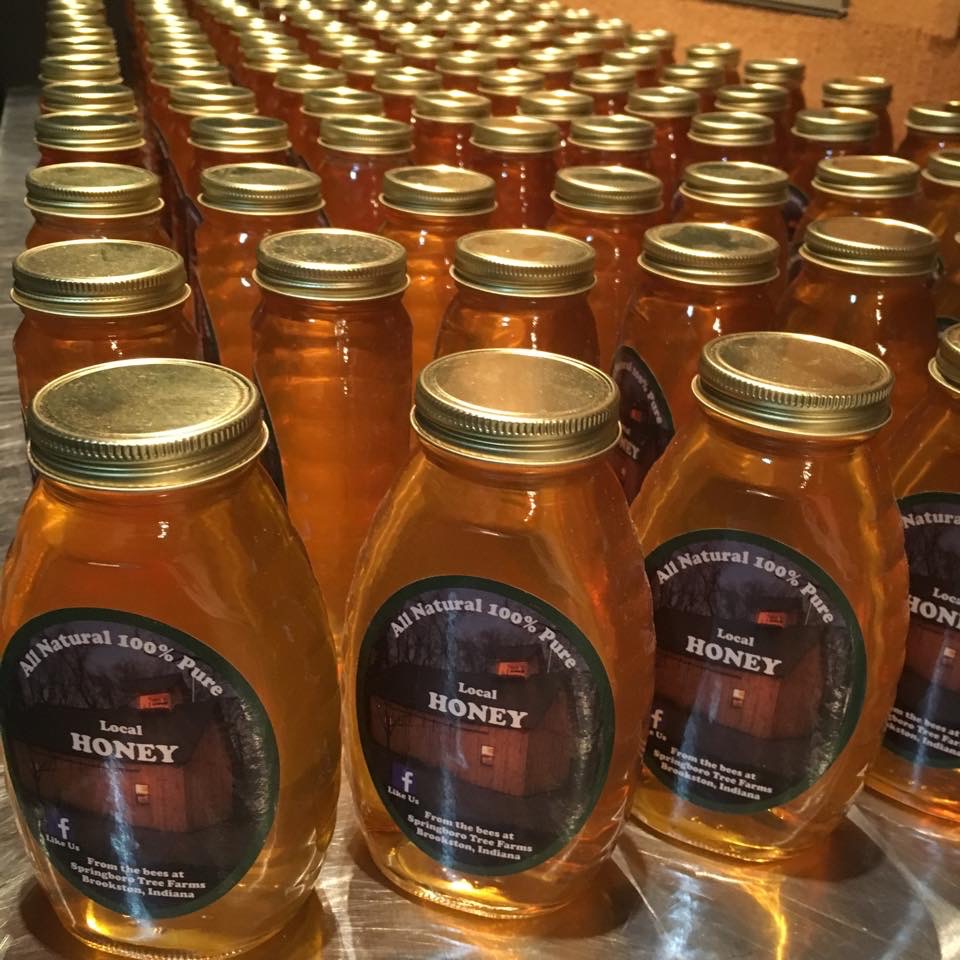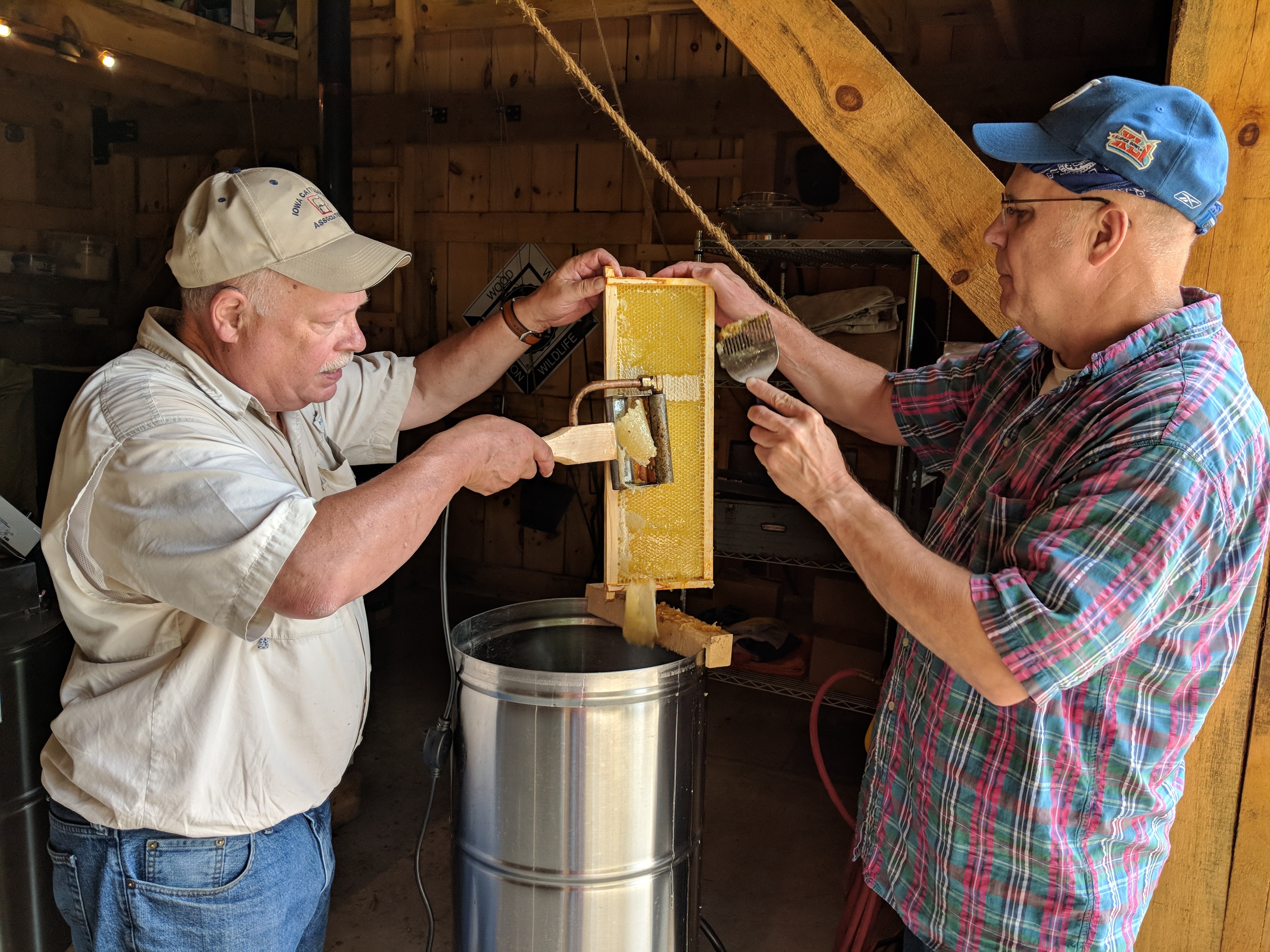
Its a sticky business...but well worth the effort.
The honey harvest begins in the apiary with a careful inspection of the hives and the identification of capped frames of honey that the colonies can spare. It's important to leave adequate honey supplies for the bees themselves. Afterall - they make honey for their own food supply.
Once the available frames are identified we remove capped frames of honey from the honey supers. During this process the hives are gently "smoked" to keep the bees calm...and the beekeepers comfortable!
We then gently brush any remaining bees away and pack the harvested frames of honey in containers to keep foraging bees off the frames..
We then transport the honey to the honey house (AKA sugar shack) where we extract it from the frames as soon as possible. This is especially important during hot humid Indiana summers. That’s because honey is hygroscopic – meaning it can absorb moisture from the air. And honey with more that 16.8% moisture may ferment and should not be sold. So we us a honey refractometer to check honey moisture before we package it.
The extraction process begins by uncapping the frames of honey. We use a Dadant electrically heated uncapping plane (M0035) and a Dadant stainless steel cappings scratcher M10752) to scrape the cappings into a Dadant Liquidator uncapping tank and wax melter. Note: later, the honey that runs into the Liquidator during the uncapping process is emptied into 5-gallon settling buckets along with the honey that flows from the extractor. And after the extraction process, the bees  wax cappings are melted in the Liquidator and poured into wax bars for use later.
wax cappings are melted in the Liquidator and poured into wax bars for use later.
Once the frames are uncapped they go into an extractor for a good spin to remove nearly all the honey from the frames.
The extractor we have is a Dadant Ranger 6-frame radial extractor. It’s a hobby-level machine but adequate for our needs.
After extraction, we let the honey stand (sealed) for about a week to allow air bubbles to rise to the top. Yeah - that process is about as slow as you'd think...about 100 time SLOWER than watching paint dry. Finally, after that, we give the honey a final moisture check and package and label the product.
[Pictured: a nice mid-summer honey harvest.]

